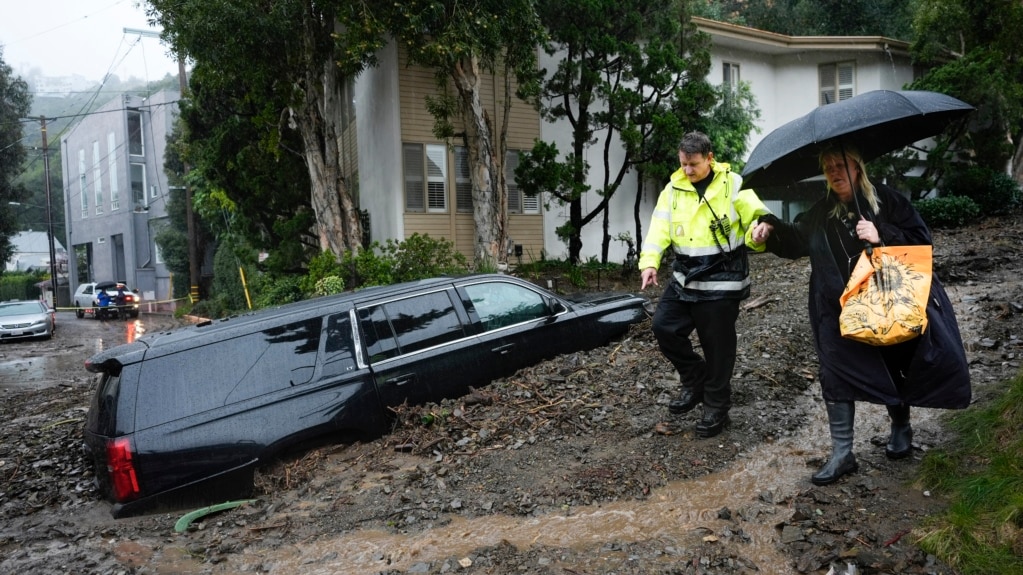In California, the second of back-to-back atmospheric rivers on Monday caused heavy rains and mudslides, flooded roadways and cut electric power.
Atmospheric rivers are long and wide areas, like a river, of water vapor in the atmosphere that form over an ocean. The National Oceanic and Atmospheric Administration says these weather systems carry as much water vapor as the average flow of water at the mouth of the Mississippi River. When atmospheric rivers make landfall, they often release this water vapor in the form of rain or snow.
Much of California was still drying out from the atmospheric river that blew in last week. Over the weekend, officials ordered people living in parts of California that burned in recent wildfires to evacuate. These areas are at high risk for wreckage flows.
About 1.4 million people living in the Los Angeles area, were under a flash flood warning Monday morning. Up to 23 centimeters of rain had already fallen in the area, with more expected, the National Weather Service predicts. It called the flash flooding and threat of mudslides, “a particularly dangerous situation.”
Keki Mingus, from the Studio City area of Los Angeles, said that mud, rocks, and water came down through her neighborhood. Mingus said, “It looks like a river that’s been here for years. I’ve never seen anything like it.”
Storm affects entire California coast
The rains brought down trees and power lines Sunday in the San Francisco Bay Area. Winds in the northern area blew as fast as 95 kilometers an hour. In the mountains, they were even stronger with gusts reaching almost 130 kilometers an hour.
Palisades Tahoe is a skiing area about 320 kilometers northeast of San Francisco. The skiing area was expected to have the heaviest snowfall yet this season on Sunday, as much as 15 centimeters per hour for a total of up to 60 centimeters. Heavy snow is continuing into Monday throughout the Sierra Nevada and motorists were urged to avoid mountain roads.
Just to the south in San Jose, emergency crews rescued people from a car trapped by floodwaters. Other teams rescued people living beside a rising river.
For the Central Coast, the weather service issued a rare “hurricane force wind warning,” with wind gusts of up to 148 kilometers an hour.
The storm then moved into Southern California, where officials warned of possible severe flooding. They ordered people to leave canyon areas where there were recent wildfires. Officials are concerned about the high risk of wreckage flows in those areas.
The latest atmospheric river storm is called a “Pineapple Express” because it stretches across the Pacific from almost as far as Hawaii.
“We've had flooding, we've had gusty winds, we've had the whole gamut here,” said Todd Hall, a weather scientist with the National Weather Service near Los Angeles. Hall said he expects the heavy to moderate rain to continue in southern California until Tuesday.
California Governor Gavin Newsom has declared a state of emergency for most areas of the state. The Governor’s Office of Emergency Services activated its operations center and deployed workers and equipment in areas most at risk.
I’m Caty Weaver.

